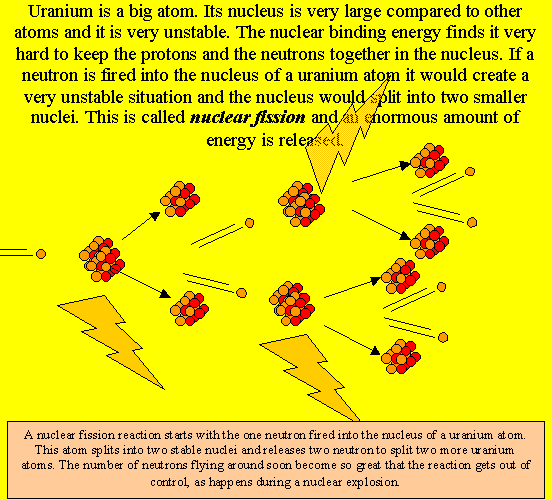Nuclear fuel comes from the splitting or fusing of atomic nuclei. The most common nuclear energy is generated by nuclear fission (splitting) reactions.
Neutrons are used to split uranium, 235 atoms, as shown on the right. This releases a great deal of energy as the atom splits into two very stable, smaller nuclei.


In places where coal and water are scarce, uranium is
used to fuel the fires of the electrical power plants. In order to keep
the reaction under control lead rods are placed in the reaction chamber.
These lead rods absorb the neutrons and do not allow them to build up.
In this case the atoms are split slowly and the energy released is manageable.
Chernobyl was a disaster that happened due to human error. The reactor
was allowed to overheat to the point where it exploded. The energy released
was enough to melt the rock it was sitting on. The reactor continued to
melt through the rock until tons of concrete eventually cooled the reactor
down. Many thousands died from radiation poisoning and many more were
afflicted with cancer and other radiation related illnesses.
Compare nuclear power plants with coal fired power plants. Discuss
the advantages and disadvantages.
The sun is fuelled by nuclear fusion reactions. What are nuclear fusion
reactions and what do they produce?